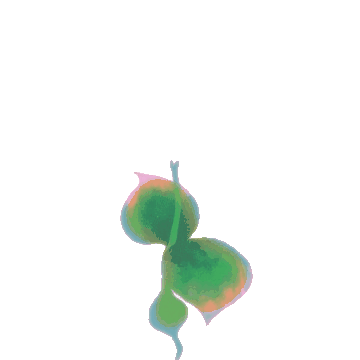Why are nutrients important for plants? (Micronutrients)

Hi everyone! Welcome back to our lessons on CP Heaven's Learning lab.
Yesterday's lesson taught us about nutrient deficiencies and how we identify them. You must have been wondering why nutrients are important and how they contribute to the growth of plants. Worry not, in today's lesson, I'll walk you through the wonderful journey of nutrients in plants.
There are 2 main groups of nutrients. Macronutrients and Micronutrients.
Macronutrients are nutrients that plants largely require, and plants only require a much smaller number of Micronutrients in comparison. Below are the lists of macro and micronutrients.
Micronutrients
-
Boron
-
Chlorine
-
Copper
-
Iron
-
Manganese
-
Zinc
-
Molybdenum
-
Nickel
-
Sodium
Macronutrients
-
Nitrogen
-
Phosphorus
-
Potassium
-
Calcium
-
Magnesium
-
Sulfur
Boron
Boron plays important role in components in cell walls, for example, pollen tube formation and transport of potassium ions across the cell membranes. It also helps regulate the opening and closing of stomata.
This means that if a plant is short of boron the plant will not be able to breathe properly and its growth of pollen tube will be deformed and not able to function normally. This means that boron is very important, especially for flowering and fruiting plants!

Chlorine
Like Boron, Chlorine also plays an important role in operation of stomata. And on top of that, it also helps maintain electrical balance of ions. During photosynthesis, it also plays a role to break bonds that holds water molecules together.
Without chlorine, the process of photosynthesis will be harder and that will mean less food for the plant and less food for the plant means slower growth!
Note: too much of Chlorine will cause adverse effect.

Copper
This element plays a part in oxidization and reaction which occur during photosynthesis. Enzymes that construct amino acids into proteins also require this element to work. Linin, which wood is partly made of, also require copper to form.
In the diagram above, we can see that a copper plays many roles in many processes in plant.
https://www.researchgate.net/figure/Copper-deficiency-and-toxicity-symptoms-in-plants_fig4_351132763

Iron
Iron, this is a very common element which we see in everyday life, but do you know it also plays many roles in plant? It is used to make chlorophyll, but it works like a catalyst and thus is not part of it. It also works in the nitrogen fixation process; this process is to convert nitrogen in the air which cannot be use by the plant.
Therefore, iron deficiency plant is poor in chlorophyll.

Manganese
Manganese is used by the plant to release oxygen while undergoing photosynthesis by accepting electrons from the water molecules.
It also breaks carbohydrates apart.

Zinc
This element is required for plants to make auxins, a super important growth hormone in plants that stimulate root branching. It also helps plants to withstand colder temperatures.
This means zinc is the component in the fertilizer to help your plants create more root growth!

Molybdenum
This element is not used by the plant. But this element is used by friendly microorganism which live in the roots of plants in the legume's family. The picture below shows a picture of how the roots looks like under a microscope.
So, what does these microorganism work? They helps the plant to change nitrogen which the plant cannot use into nitrate, which is helps plants to grow larger!

Citations: Solomon, Berg & Martin (2011) Biology 9th Edition
Nickel
This element can be toxic to us when large enough amount contacts our body. But plants will use small amount of them to metabolise urea nitrogen into ammonia which is usable in the plant. Without nickel, toxic can slowly build up at the edges of the leaves and that is bad for the plant.

Sodium
This element can isn't useful for most plants, but some studies had shown that it support plants like sugarcane in it osmotic activities.

That's all for today's lesson on Micronutrients! I hope today's lesson isn't too dry and you had learned a little more on this topic!
Our next lesson will be on lighting and how to check the amount of light in your growing environment. Stay tuned! 😊




